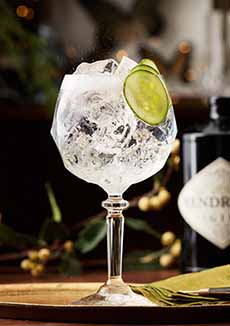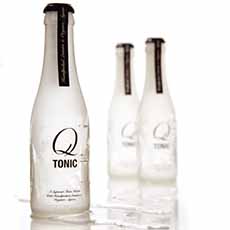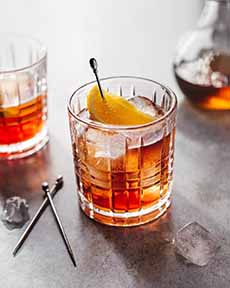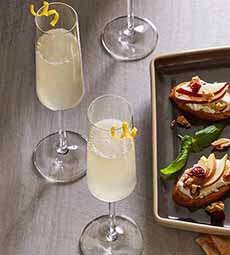The History Of Gin & Tonic For World Gin Day
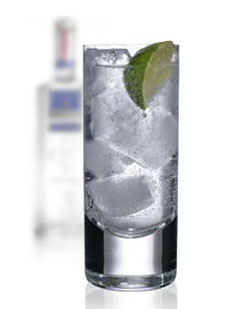 [1] The classic gin and tonic (photo © Martin Miller’s Gin).
|
June 15th is World Gin Day, a holiday created by Neil Houston of Birmingham, England. It started modestly in 2009 when Houston. who reviews gin on his website, Yet Another Gin, gathered some friends. It has since turned into a worldwide celebration. “World Gin Day is a celebration of all things gin,” says Houston, “and a chance to mix up your favourite G&T [gin and tonic] or other gin cocktail.” We’ll go for the G&T: as delicious as it is simple to prepare. > Also below: The history of the Gin & Tonic. > Plus, a year of gin-related holidays. > The year’s 49 cocktail holidays. In alphabetic order: Ingredients 1. FILL a highball glass with ice cubes. Add the gin, tonic water, and lime juice. Stir thoroughly to blend. 2. GARNISH with a lime wedge and serve. Simply freeze tonic water in an ice cube tray. We use a covered ice cube tray to keep the cubes tasting fresh, but you can use plastic wrap. Historically, spirits were created for medicinal purposes. So was the G&T. Malaria was a persistent problem in the world’s tropical regions. In the 1700s, quinine, a muscle relaxant developed from the bark of the cinchona tree by the Quechua natives of Peru, was found to be helpful in treating the disease. Like much medicine, quinine had an unpleasant, bitter taste, even when diluted in water (quinine water). Malaria was prevalent among British soldiers stationed in India. A Scottish physician, Dr. Francis Buchanan, who served with the East India Company in the early 19th century, advocated the use of quinine as both a prophylactic and treatment for malaria. While it was not known who suggested masking the quinine more palatable with gin, this wasn’t a stretch because gin was the British spirit of choice. |
|
|
Thus emerged the Gin & Tonic: tonic water (quinine water) by adding sugar, lime, and gin to the quinine. The addition of sugar to quinine preparations to make them more palatable was attempted by a variety of people. But a breakthrough occurred in the mid-19th century when British pharmacist Erasmus Bond created and marketed “Indian Tonic Water,” which included quinine and sugar. Over time, the name was shortened to simply “tonic Water,” and the G&T became a standard in cocktail culture anywhere in the world. The first quinine water was not carbonated. With the expansion of carbonated beverages, fizz was added, and it was given another name, tonic water, to express its value in cocktail culture. Today’s quinine water contains much less quinine since it is no longer used as an anti-malarial. That’s why some people enjoy it as a soft drink. And note that mass brands contain artificial quinine—it’s much cheaper. For the real quinine experience, try an artisan brand like Q Tonic. CHECK OUT WHAT’S HAPPENING ON OUR HOME PAGE, THENIBBLE.COM. |
||
